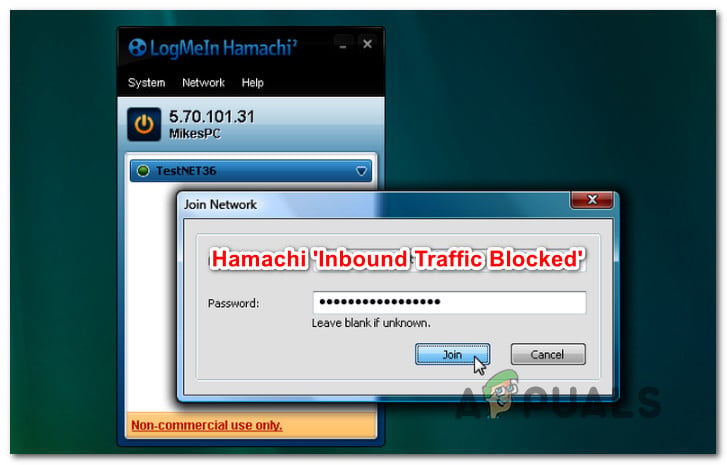What is causing the “Inbound Traffic blocked, check firewall settings” error?
We investigated this particular issue by looking at various user reports and the repair strategies that are commonly being used to resolve this particular issue. As it turns out, there are several different potential culprits that might be responsible for this particular issue: If you’re currently struggling to resolve the very same error message, this article will provide you with some troubleshooting guides. Down below, you’ll find a collection of methods that other users in a similar situation have successfully used to fix the “Inbound Traffic blocked, check firewall settings” error. Each of the potential fixes presented below is confirmed to work by at least one affected users. Since the methods are ordered by efficiency and difficulty, we advise you to follow them in the order that they are presented. One of them is bound to resolve the issue regardless of the culprit that is actually causing it.
Method 1: Removing Hamachi from the list of Protected Network Connections (if applicable)
If you’re encountering this issue with Hamachi and you’re using the default Windows security protection (Windows Defender + Windows Firewall), chances are the issue is occurring because your firewall is blocking inbound connections in an attempt to protect the virtual network. Note: If you’re not using Windows Firewall as the default network protection software, move down directly to Method 4 as this one will not make a difference. Several affected users have reported that they managed to resolve the issue by accessing the Windows Defender Firewall settings and customizing the default Protection network connection behavior so that Hamachi is excluded from the list of protected items. Here’s a quick guide on removing Hamachi from the list of Protected Network Connections: Note: Keep in mind that if you have multiple computers connected to the same Hamachi network, you need to repeat this step with every connected machine. If you’re still encountering the same error message while trying to use Hamachi or this method wasn’t applicable, move down to the next method below.
Method 2: Adding Hamachi to the list of excluded Firewall items
Some affected users have been able to resolve the issue entirely by adding the main Hamachi executable to the list of excluded Firewall items. This might seem like a risky procedure, but it isn’t as long as you trust the Hamachi network that you’re using. We’ve seen this fixed being confirmed a couple of times and it seems to that the likelihood of success is higher on Windows 10. Note: If you’re using a 3rd party firewall, move directly to Method 4. Here’s a quick guide on adding Hamachi to the list of excluded Firewall items: If you’re still encountering the “Inbound Traffic blocked, check firewall settings” error when trying to use Hamachi (or this method wasn’t applicable), move down to the next method below.
Method 3: Creating a new inbound rule for Hamachi
If the first two methods above didn’t resolve the “Inbound Traffic blocked, check firewall settings” error and you are using Windows Firewall, then you should be able to resolve the issue by establishing a new inbound rule for Hamachi. This procedure is a little more advanced than the first two, but you should be able to get the job done if you follow the instructions carefully. Several affected users that have also been encountering this issue have reported that they managed to resolve the issue by creating a new inbound rule that excluded Hamachi from the list of managed items. Here’s a quick guide on how to create a new inbound rule for Hamachi: If you’re still seeing the “Inbound Traffic blocked, check firewall settings” error or this fix wasn’t applicable, move down to the next method below.
Method 4: Installing the LogMeIn Hamachi driver manually
It’s also possible that you’re encountering the issue because the main LogMeIn Hamachi driver that is supposed to handle the inbound connection was not installed correctly. Several affected users have reported that the issue was resolved after they used Device Manager to manually install the required driver via the .ini file. Although this sounds like a technical procedure, it’s quite simple if you follow the instructions to the letter. Here’s what you need to do:
Fix: Our Systems have Detected Unusual Traffic from your Computer NetworkHow To Make Arduino Based Traffic Light Controller?How to Test Network Performance on your WAN using Artificial Traffic?How to View Traffic and Other Details of your Routers and Switches in Real-Time?
